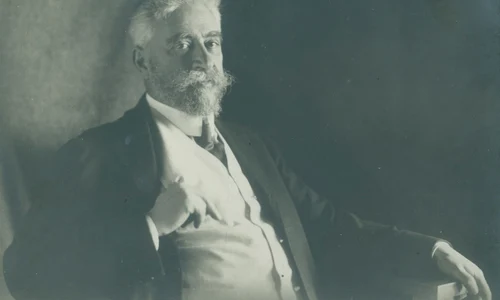
The Enigma of the Ninth Legion
The mysterious disappearance of the famous Ninth Legion has always sparked off the interest of historians. Could the rebellion of the Scottish tribes have brought about its dissolution and led to the consolidation of a very strong border in the north, or is the explanation a totally different one, one in which the Pictish tribes play a lesser part? Legend has it that one of the best trained military forces of the Roman empire was totally overwhelmed and hammered by a group of local barbarians, forever vanishing in the dark mists of Caledonia. The improbable triumph of this ‘inferior’ population contributed to the consolidation of the national feelings of both the Scottish and the English. For the English it is the successful story of little “Davids” who smashed a ruthless “Goliath”. To the Scots it means even more, it is an expression of supreme freedom, since Roman imperialism also tends to symbolize English one as well. But is there any truth in this?
The legend was offered a coherent approach thanks to novelist Rosemary Sutcliff, who published in 1954 a book which immediately became a bestseller:“The Eagle of the Ninth”. Ever since this moment people have been enchanted and thrilled by the story of the young officer Marcus Aquila, who dares to travel past Hadrian’s wall in order to unveil the truth about his father who perishes along with the other soldiers serving in the legion. He is also determined to bring back the banner, the bronze eagle, so as to regain a bit of Roman honor. A noble task, however many historians dismissed the novel, claiming that the Ninth is actually the victim of a strategic transfer in the Middle East, where it perished fighting the Parthiians.
Evidence of such a transfer form Britain is yet slim, comprising three imprinted bricks found at Nijmegen, the Netherlands. In fact, the last certain piece of evidence that confirms the existence of the legion is dated back to the year 108 AD, in York. Later in the second century, when a full list of all the legions is commissioned, the Ninth no longer appears in documents. The story of this military unit seems to be slightly more complicated and misfortunate.
The legion was founded by Pompey in 65 BC, during his wars in Hispania. Four years later it ends up under the command of Julius Caesar, who transfers it in Gaul and uses it in his long conquest campaigns. The commander mentions it when he speaks about the context of his battles with the Belgian tribes. During the civil wars the legion takes part in the battle of Ilerda, Hispania. The soldiers must have been truly impressed with the general, since they join him and cross the river Rubicon, aiding him in the decisive fight at Pharsalus. As a reward, Caesar disbands the troops and settles the veterans in western Italy. The misfortunes of the legion begin after the general’s death, because Octavian, in dire need of troops, calls it back to arms in order to crush a rebellion in Sicily initiated by Pompey’s son. Afterwards he sends it to Macedonia and the soldiers engage his rival’s army at Actium, in 31 BC.
These great efforts prove not so advantageous for the soldiers, since they are once more sent to Hispania to take part in Augustus’ wars with the Cantabri. Then their journey continues till they reach the Germanic tribes. Here the legion was supposedly commanded by Marcus Vipsanius Agrippa, and after the Roman disaster in the Teutoburg Forrest, it suffered another transfer, this time in Pannonia.

In the year 43 AD emperor Claudius summons the legionaries to join him in his conquest of Britain and from now on the fate of the Ninth will be bound to the future Roman province. 17 years later, the Iceni tribe led by the masterful queen Boudicca organize a dangerous rebellion, aiming at first to the city of Camulodunum (Colchester). The local population call on governor Catus Decianus, who sends some auxiliary troops, yet to few to resist the overwhelming enemy. Although Decianus flees in Gaul, it is highly likely that he ordered the legion controlled by Quintus Petilius Cerialis to make haste to the city which was under siege and the locals gathered in the temple of Claudius. Nonetheless, the legion was, as many others, scattered in forts and encampments, which made it impossible for Cerialis to gather more than one cohort and pieces of other two. Only the cavalry is capable of holding up against the Iceni.
In 77 AD we find the legion dwelling in York, from where it must defend the problematic northern border, replacing Legio II Adiutrix. Cerialis resumes its command after some wars in the Rhine region and this time he will have to face another vindictive tribe, the Brigantes led by Venutius. Cerialis manages to break down his forces using both the Ninth and Legio XX Valeria Victrix. Six years later, commander Agricola marches with the troops beyond the wall, because scouts report that the Caledonian tribes have grown weak and disunited. He divides his military into three groups for a coordinated attack, but apparently they could not resist the guerilla warfare of their Pictish rivals. Some researchers believe that the Ninth was stationed in the Castra Pinnata, whom the Caledonians invaded. Tacitus mentions that the guards fell asleep and the lack of vigilance cost the legion two thirds of its men. Despite the great loss, the legion is reshaped.
Did it perish or not?
Legend has it that the new army stationed at York/ Eboracum engaged in several other wars north of the wall and all of a sudden it was wiped out of history, probably around 117/118 AD. This theory is backed up by the fact that soon after the Sixth will be transferred here and the Ninth is no longer present in textual evidence. Nevertheless, there are some clues that argue against such a sudden disappearance. The stamps from Nijmegen are dated in the year 121, and it seems that there are a few officers still in service after 118;one Lucius Aemilius Karus even becomes governor of Arabia in 142.
But it is equally possible that the legion may indeed have been hammered down in Scotland and the stamps only represent some leftovers after the transfer of the legion. Other hypotheses state that the Ninth could have been destroyed during the Jewish revolt led by Simon ben Kosiba in 132-136, or in Cappadocia in 161, or during a rebellion on the Danube in 162. Either case, the inscription listing all the legions and dating back to the reign of emperor Marcus Aurelius makes no reference to the Legio IX Hispanica.
The last inscription naming it, the one from 108, speaks about a building project in the reign of Trajan. Emil Hűbner, who collaborates with Theodor Mommsen to compile the great work Corpus Inscriptionum Latinarum, introduces this inscription as well in the section Inscriptiones Britanniae Latinae, in 1873. Moreover, one common textbook about Roman Britain was “Britannia Romana:The Roman Antiquities of Britain”, written by antiquarian John Horsley in 1732. He manages to identify the Roman legions of Britain. He knows Legio XIV Gemina who leaves in 70 AD, as well as about Legio II Augusta, XX Valeria Victrix, and he is surprised that there is no word about the Ninth in the period between Tacitus and Hadrian. He also reminds us of Legio VI Victrix, which according to one inscription about Marcus Pontius Laelianus, consul in 144 and legionary tribune seven years earlier, arrived in Britain around 120 AD, about at the same time with the new governor, Aulus Platorius Nepos. So what happened to the Ninth?

Antiquarian John Horsley claims it was indeed smashed, but there are no records of the event, just like in the case of the one destroyed by Parthians. Like Horsley, Bartolomeo Borghesi finds its disappearance very odd and suggests the likelihood of a tribal rebellion that sealed the soldiers’ fate. Moreover, Mommsen quotes Hadrian’s biographer who mentioned that the Picts could not be controlled at all, and Marcus Cornelius Fronto writes to Marcus Aurelius telling him about the massive damage caused both by Scots and by Jews. Information regarding a potential war in Britain is vague:could the coins depicting a personified Britain during the reign of Hadrian hint at such a confrontation? They might as well hint at his visits here.
When Emil Riterling publishes his study about Roman legions in the Realencyclopädie in 1925, the theory of a brutal destruction of the Ninth was generally accepted among researchers. But he notices that the transfer of the Sixth did not necessarily mean an annihilation of the previous military force. And the evidence concerning a British campaign in 118/119 is not that convincing. The arrival of these new troops may have also expressed the emperor’s desire to cement Roman presence south of the wall he wanted to build.
Ritterling’s arguments are based of prosopography:he notices that some of the officers reach their career peak too late to be considered that they only served in the legion during Trajan’s reign. One of them is the aforementioned Lucius Aemilius Karus, whose service in the legion might have been simultaneous with that of Laelianus in the Sixth. Another tribune, Lucius Novius Crispinus Martialis, consul in 150 after resigning from his post as legatus Augusti pro praetore provinciae Africae, couldn’t have served in the legion earlier than 123. Similar data therefore imply that a British war around 119 was quite improbable.
Archaeologist Eris Birley has two scenarios in mind:either the Ninth was transferred from Britain under the circumstances of the Parthian wars, or the Sixth was brought here to fill up the military gaps and secure the area. In this case the Ninth may as well have been transferred to Judaea in the time of emperor Hadrian. Ian Richmond on the other hand is the one who cemented the myth in his work “Roman Britain” (1955), unbendingly advocating the idea that the legion was exterminated in a battle with local tribes around the year 119. Rosemary Sutcliff also added fuel to the legend, but she was more inspired by the Cambridge Ancient History and Rudyard Kipling.
In 1959 archaeologists uncover the stamped bricks at Nijmegen, but they also discover the same seal on objects at DE Holdeurn, 5 km. away. Till then the area was only documented with the presence of Legio X Gemina, who is compelled to abandon the camp at Hunerberg because of the Dacian wars. The inscription Vex(illatio) Brit(annica) is present, but it is highly unlikely that a vexillatio signed the bricks with the name of the legion. One possibility would be that the fort was occupied by troops sent from Britain and the legion settled in Germania Inferior. This is also supported by the existence of an altar dedicated to Apollo near Aquae Granni (Aaachen), erected by Lucius Licinius Macer, primus pilus (the main centurion), promoted in the rank of praefectus castrorum. He must have been a more important character than a soldier from a vexillatio
One theory of ceramologist Brian Hartley suggests that the legion station at Carlisle in the first years of Hadrian’s reign. Stamped bricks are being produced at Scalesceough, not far from Carlisle, and they bear the inscription LEG VIIII HISP, like those from Nijmegen, and not LEG IX HISP, like those from York, so there may have been some production continuity in Germania Inferior. There are further clues to support this claim, such as the stamp of the legion on a pendant attached to a harness. Other names of officers support the continuity hypothesis:Lucius Aninius Sextius Florentinus becomes proconsul in Gallia Narbonensis in 127 after serving as a legatus legionis, or Quintus Numisius Iunior, another legatus, becomes consul in 161, so he couldn’t have began his career earlier than 119.
All in all, debates continue regarding the fate of the Ninth, even though the few shreds of information apparently point out that the legion lasted more than its myths tells us. Where and why did it perish? Due to later Pictish revolts? Was it transferred in the east? Did it perish with Severianus at Elegeia under the Parthian sword in 162? We can only hope for more epigraphic material to shed light on this matter.
For further reading:
E.B. Birley, "The fate of the ninth legion", in:R.M. Butler (ed.), Soldier and Civilian in Roman Yorkshire (1971) 71-80;
Duncan Campbell, “The fate of the ninth”, in: Ancient Warfare 4.5 (2010) 48-53;
J.K. Haalebos, "Römische Truppen in Nijmegen", in:Yann Le Bohec, Les légions de Rome sous le Haut-Empire(2000 Lyon) 465-489.
















